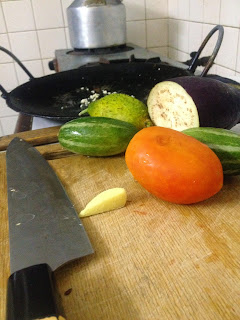 |
| Jatiyo Sangsad Bhaban, the National Parliament House. According to Wikipedia, it's one of the biggest legislative buildings in the world, and there's a very nice, but fenced and safely guarded park around it. My Bangladeshi friends tell me the park used to be open for visitors, back in the days, before the political situation got so tense. Since 2014, Awami League has passed some highly contentious decisions here, in absence of the boycotting opposition. It's both frightening and interesting to get to know more about the deadlocked political situation that led to bloody clashes in the beginning of 2015. |
 |
| Motijheel at the city centre at a very quiet Saturday morning: Rickshaws, busses, cars and CNGs (the little green vehicles on the right side in the back) are actually able to move on the streets. |
 |
| Cursorily enough, no one bothered to renovate the back side of the house. For pictures and films, superficial beauty suffices, I guess. |
Learn and note: Bengali relates to the culture and laguage,
including e.g. people living in Kolkata. Bangladeshi
specifically refers to the nationality of Bangladesh.
























.jpg)


.JPG)

.JPG)


.JPG)
.JPG)
.JPG)
.JPG)
.JPG)

.jpg)

